French Polynesia with Adventures Abroad
Alison and I have just returned from what many would describe as the trip of a lifetime. We spent almost three full weeks exploring both the well known and many of the lesser known islands of the massive French overseas territory collectively known as French Polynesia. In addition to spending time on Tahiti, Moorea and Bora Bora, we spent eleven days aboard the supply ship Aranui 5 visiting some of the remotest and least visited places in the world in the Marquesas Islands and the Tuamotu Archipelago. The tour was organized by Adventures Abroad and led by veteran guide Martin Charlton.
We were originally scheduled to go in November of 2020, but Covid put a halt to that until very recently. Our group was the first organized tour to take passage on the Aranui 5 since the Covid restrictions were relaxed and it was a pretty special experience, even with some pretty rigid protocols still in effect. Here are my top reasons for why I would choose Adventures Abroad to introduce you to one of the most exotic places on the planet. I base my opinion on paying the same amount as all the others in our group did and receive no consideration from Adventures Abroad for writing my posts about this trip. I am also happy to answer any questions potential travellers to French Polynesia might have by contacting me directly at the email address provided on my website.
But let’s start with an initial question.
1. Why Visit French Polynesia?
If someone asked you what continent Tahiti was on, or Fiji or even New Zealand, what would be your answer? We have all been taught that there are seven continents – Asia, Africa, Europe, North and South America, Australia and Antarctica, but where does that leave the above places and dozens of other small Pacific island nations? The reality is that there is an eighth region of our planet that if it was a continent, would the third largest on earth. This is Oceania and leaving aside Australia which is technically a part of it, includes the distinct regions of Micronesia, Melanesia and Polynesia.
The Polynesian triangle stretches from New Zealand in the south to the Hawaiian Islands in the north and Easter Island (Rapa Nui) in the east and encompasses over 1,000 islands spread over a staggering 800,000 sq. miles (2,072,000 sq.kms.). The commonality of the Polynesians is their language and culture that is quite distinct from those in other parts of Oceania.
This is a map of the Polynesian triangle showing a number of well known countries like New Zealand, Samoa, Tonga and the Cook Islands along with a lot of lesser known ones like Tokelau, Tuvalu and Niue. Then there is French Polynesia which many people mistakenly believe is the same thing as Tahiti. It’s not. Tahiti is one of over 120 islands amid five distinct archipelagos that comprise an area larger than the United States west of the Mississippi. However, the total land mass within this vast oceanic expanse is smaller than Rhode Island. It has just over 280,000 inhabitants of whom 190,00 live on Tahiti. The rest are scattered over 74 other islands, some in populations as small as fifty. Some of these like the Marquesas and the Gambier Islands are among the remotest and least visited places on earth.
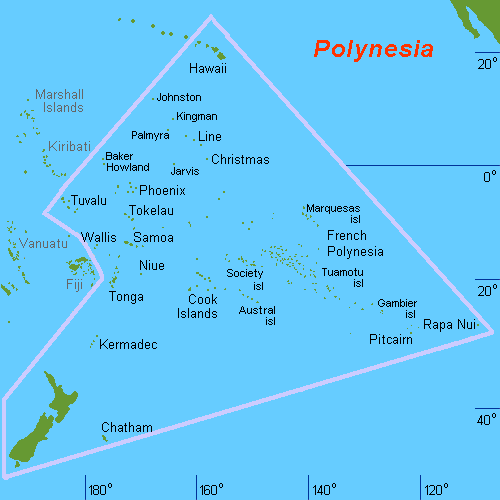
Ok, thanks for the geography lesson, but why would I want to visit French Polynesia? Well if their very remoteness is not tempting enough, how about the fact that many of the islands are simply stunningly beautiful, among the most exotic and photogenic you’ll come across anywhere in your travels. Here’s a few examples starting with Moorea.

And Bora Bora, a name legendary among world travellers.
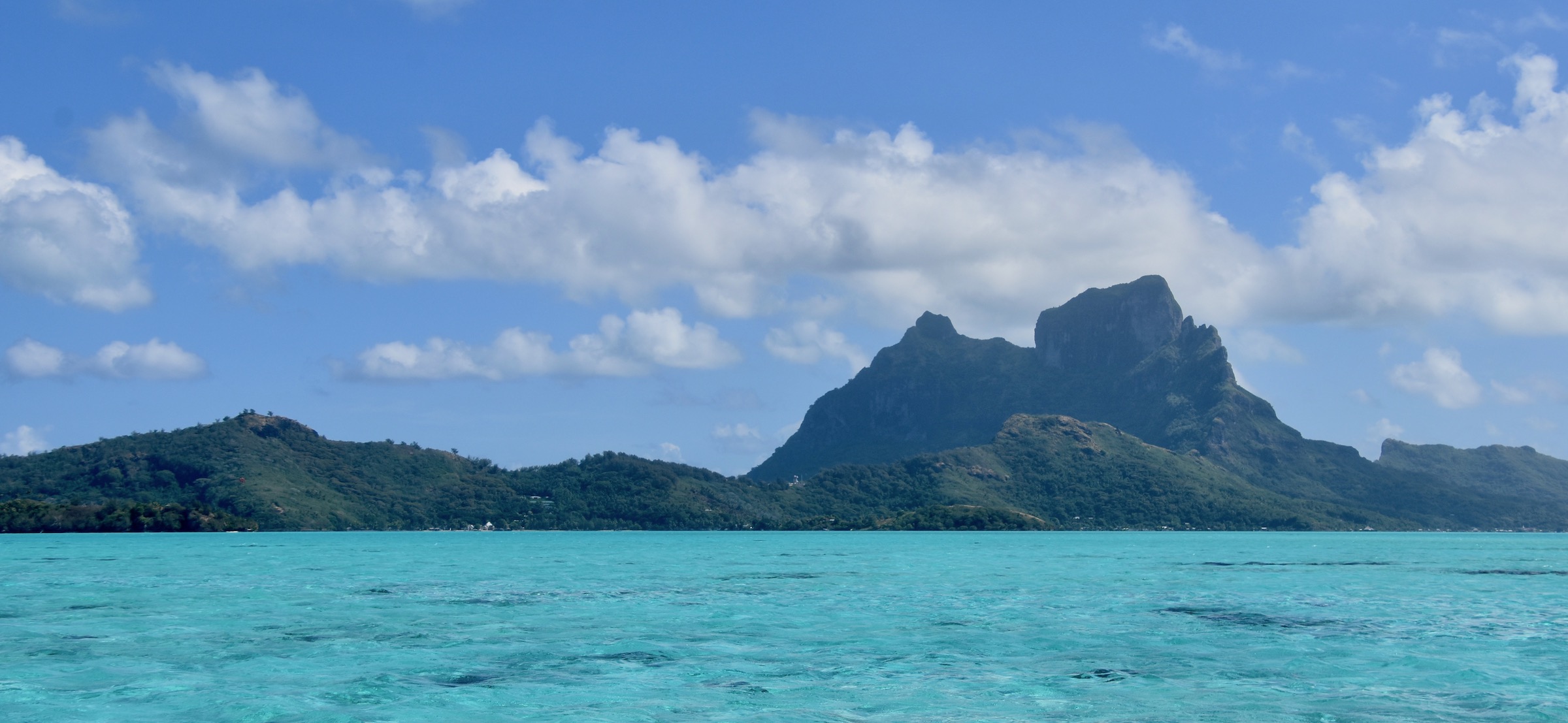
And lesser known places such as Hiva Oa where Paul Gauguin spent his final days.
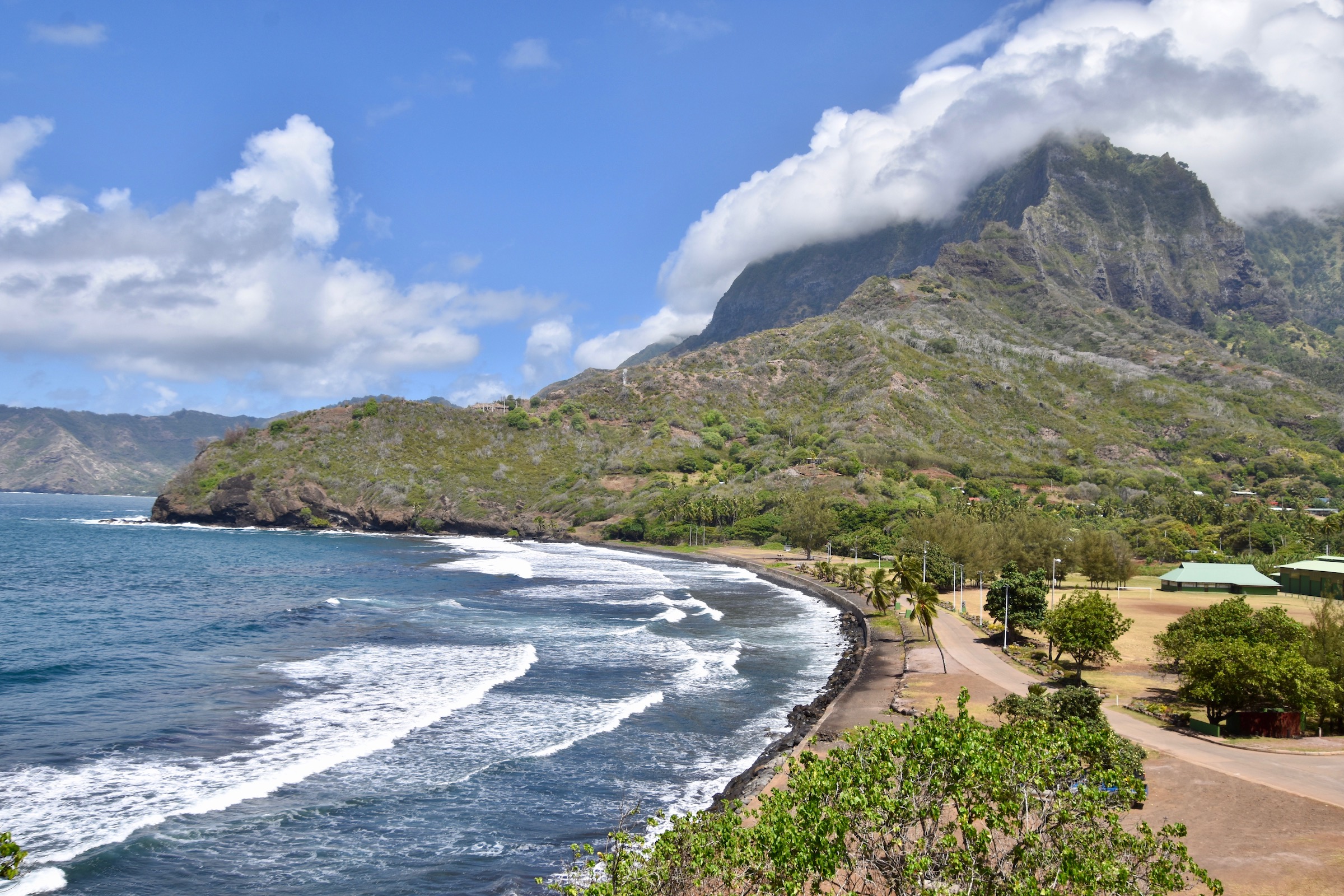
And Nuku Hiva where a young Herman Melville jumped ship and spent months as a captive of cannibals, an experience which he turned into his first novel, Typee.
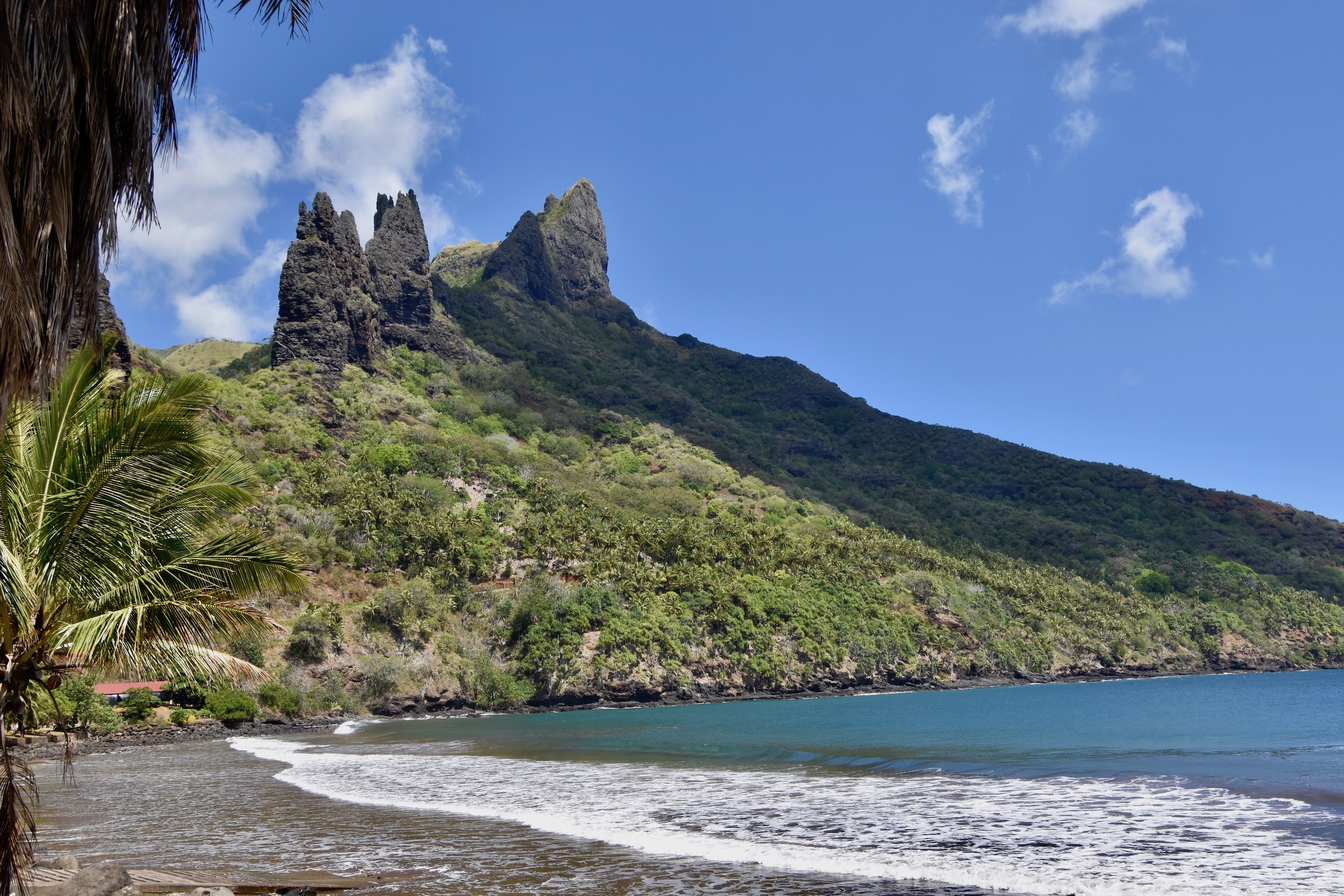
If this is not enough, consider the well deserved reputation of the Polynesians as among the most naturally beautiful, joyous and generous people you’ll find anywhere in your travels. The earliest Europeans to visit Tahiti including Captain Cook commented favourably on these traits. Fletcher Christian and some of his fellow ship mates succumbed to the allure of the islanders to the extent of pulling off the most famous mutiny in history aboard the H.M.S.Bounty. Today you can visit the very sight at Venus Point, just outside Papeete, where the ship was moored during its month’s long stay in Tahiti.
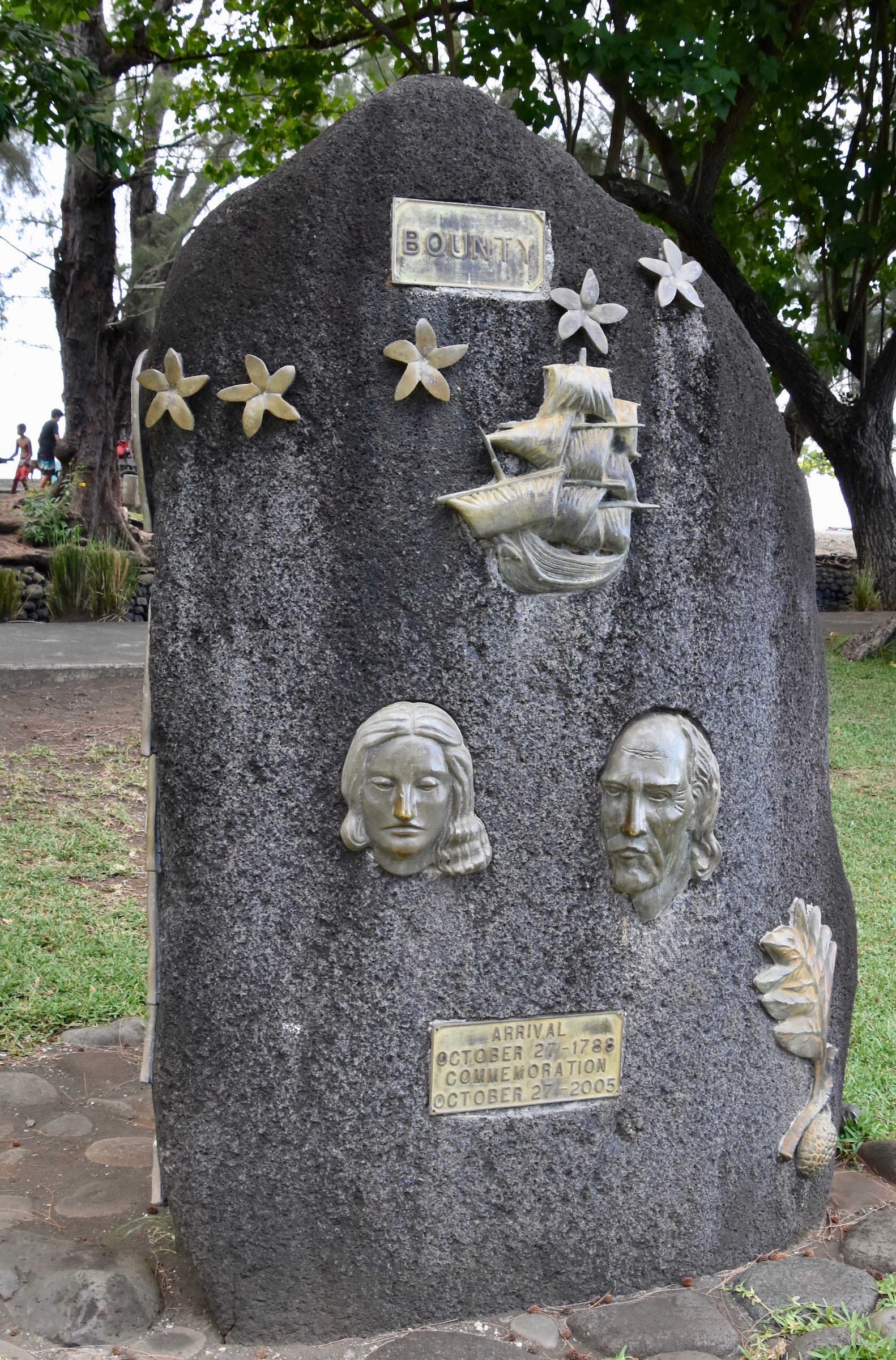
There is perhaps no people more musically inclined than those of French Polynesia. It seems that from the earliest ages they have a small Polynesian guitar as almost a fifth appendage. During a visit to any of the islands you will hear the sweet sounds of these tiny instruments accompanied often with drums and vocals. Time and again during my visit I witnessed spontaneous gatherings of people of all ages just enjoying each other’s company while singing and playing. Since these were private affairs I did not intrude by filming them, but there were plenty of chances to do so in events put on for the benefit of tourists like these traditional drummers and dancers at a sacred banyan tree on Nuku Hiva in the Marquesas.
Surrounded by the ocean as the islands of French Polynesia are, it is little wonder that its people are adept at every aspect of enjoying the water including in their outrigger canoes, surf boards (surfing was invented in Polynesia) and most particularly, swimming. I got a great example of this when our boat, of which more will be written, was tied up at the pier in Oa Pou and kids from four to fourteen used the ship’s mooring line as a staging ground for diving, tightrope walking and general good-natured tomfoolery. There was a natural joie de vivre which unfortunately in this day of smart phones and social media, you rarely see in western societies anymore.
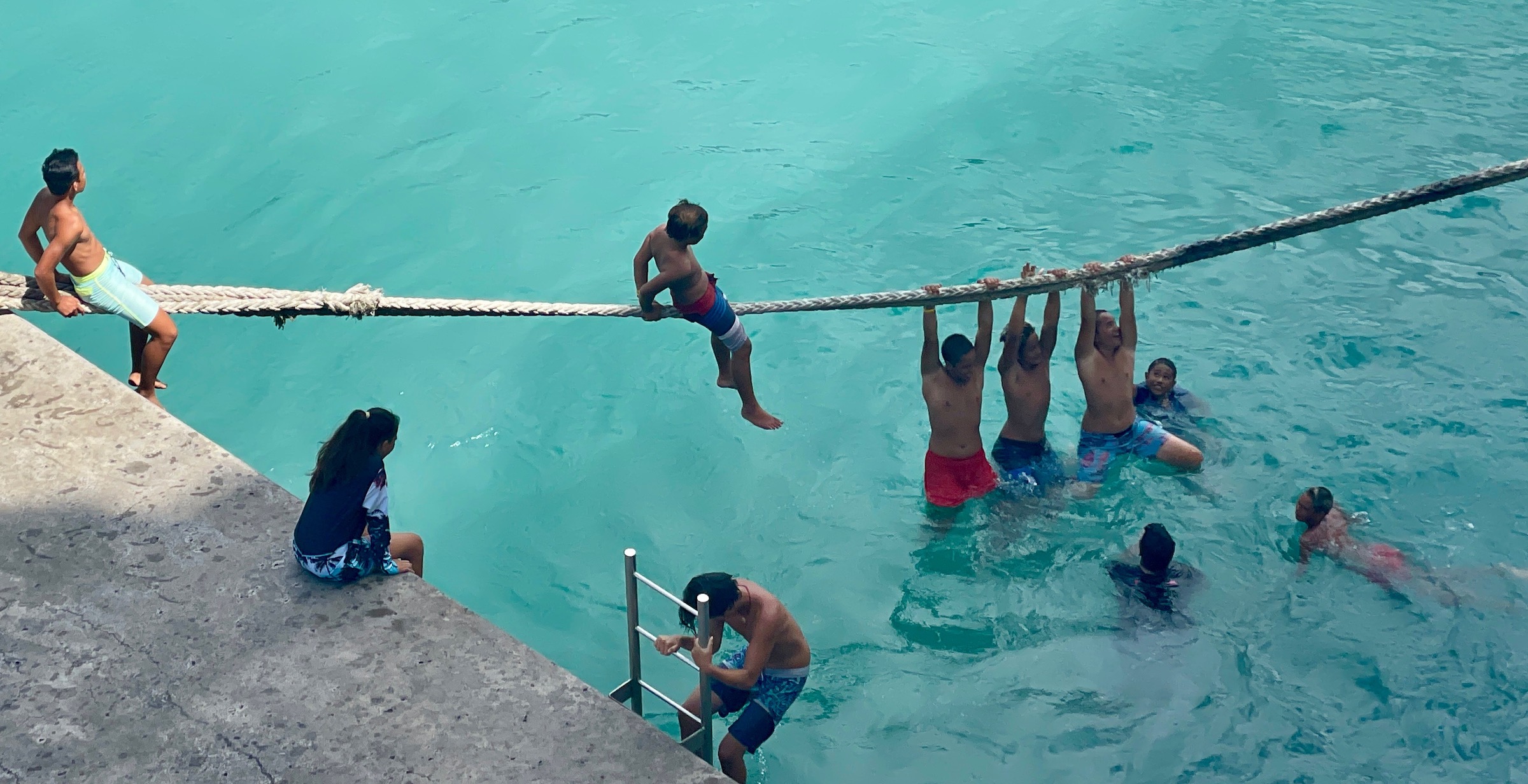
So the islands are beautiful and so are the people, what else would draw me to French Polynesia?
How about a climate that averages 79°F (26°C) year round and is almost always sunny with afternoon rain showers to cool things off? I don’t know about you, but as I get older I mind the cold more and enjoy hot weather more than I used to. If never having to put on more than a short-sleeved shirt, shorts and sandals is for you then the climate in French Polynesia is about as perfect as it gets anywhere on this planet.
One of the drawbacks of the tropics is that it is not only people who enjoy this type of weather, but also all kinds of things that can be dangerous to humans, like poisonous snakes, centipedes and spiders. Or larger problems like lions, tigers and hyenas. Or really tiny ones like malarial carrying mosquitoes, tsetse flies or parasites of all kinds. Thankfully, none of these are a problem in French Polynesia. Yes there are mosquitoes and no-see ums (called nonos by the locals), but frankly they were nowhere near as bad as the black flies or ticks will be in my native Nova Scotia in a few weeks. As I will detail in an upcoming post, even the sharks are friendly.
If you are still not convinced, let me come at you from a different perspective, your stomach. If you love seafood, especially tuna, then dining in French Polynesia is as close to perfect as it gets. Unlike many of the newly independent nations of Oceania who have had to sell their fishing rights to the Chinese for need of money, for reasons I’ll get into, this hasn’t happened in French Polynesia. Thus the seas abound with dozens and dozens of varieties of splendidly edible fish, harvested by local fisherman in a sustainable way. No farmed seafood here thank God.
The one dish you will see on just about every menu on the islands is poisson cru or ‘Ota ‘ika which is the French Polynesian version of ceviche. The raw fish is marinated first in a citrus juice until it turns a bit opaque and then coconut milk and sliced fresh vegetables like onion, tomato and cucumber are added. I have to confess to quickly become addicted not only to this dish, but also tuna tartare, tuna sashimi and my absolute favourite, tuna carpaccio. You can sometimes get all four at once such as this one from Lucky House in Bora Bora and yes, it’s worth travelling half way around the world to eat.
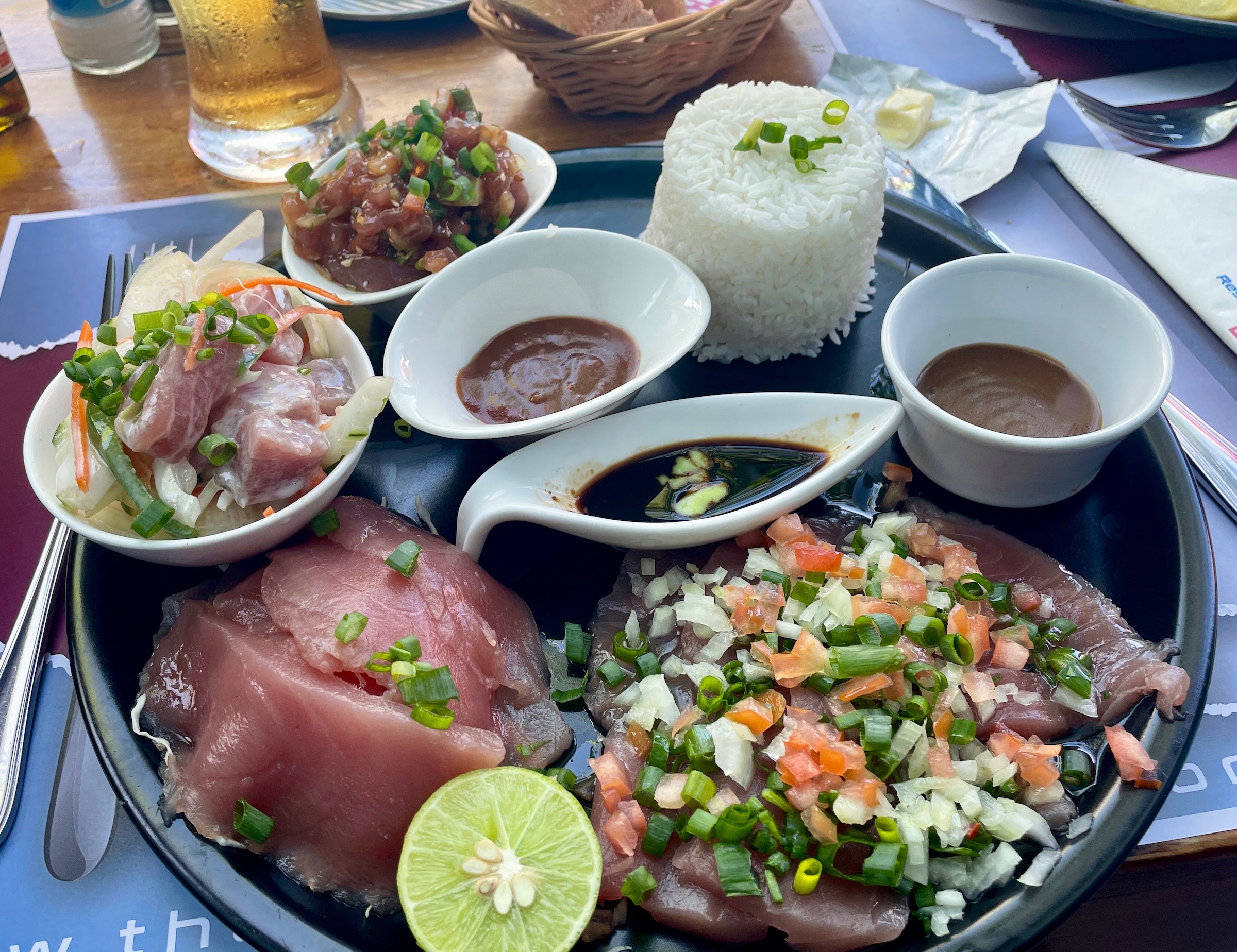
While I loved the red tuna as it is called here, Alison really got into parrotfish of all things. It is always cooked, but can have any number of crusts adding a myriad of flavours to the mild white flesh. This is coconut crusted parrot fish from Bloody Mary’s on Bora Bora.
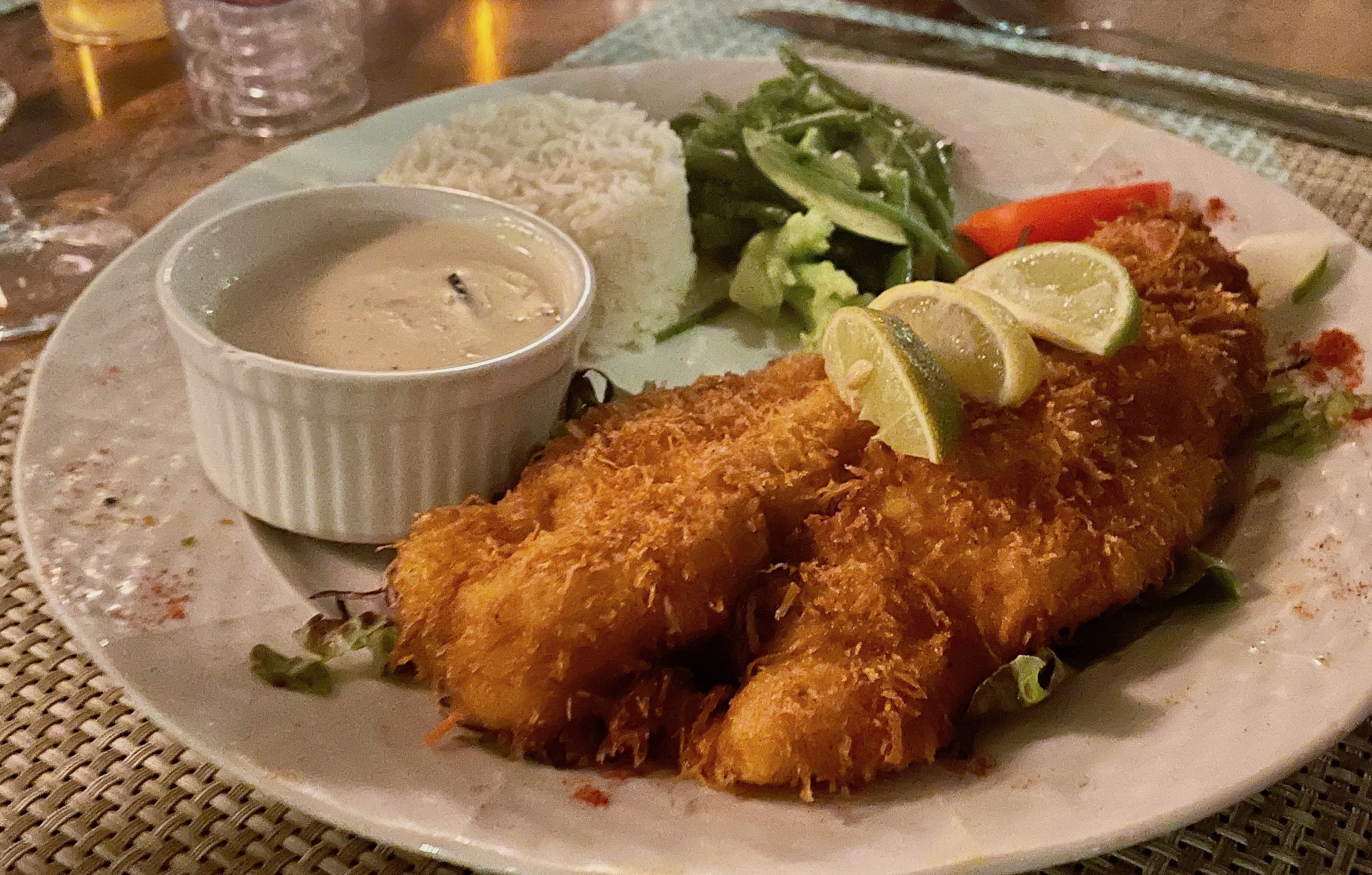
In addition to the great seafood which includes another of my favourites, octopus, you’ll get lots of chicken and pork for your meat fixes. Another great aspect of French Polynesian produce is the abundance of fresh fruit. Not a day or a meal if you prefer, need go by without sliced pineapple, papaya, melon, mango, banana, grapefruit, pomelo and even breadfruit, although that can be an acquired taste.
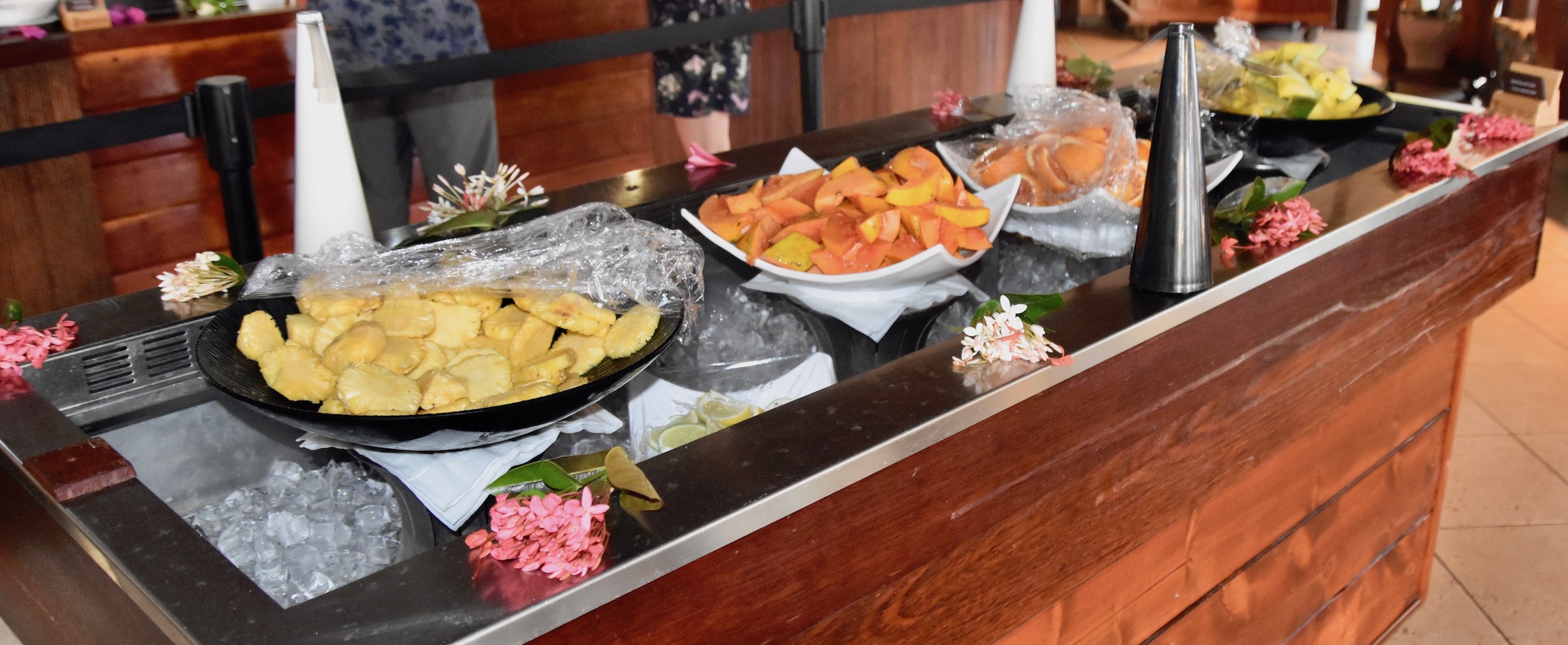
Your heart will thank you for this, because there is another indulgence that is more caloric, but very difficult to pass on. The French have brought their mastery of baking to Polynesia and every meal is accompanied by fresh baked bread and every breakfast buffet has not only bread, but croissants and other baked delights. The desserts are also a temptation few can resist, or at least not me. This is a baked Alaska from aboard the Aranui 5, just one of many classic desserts I enjoyed in French Polynesia.
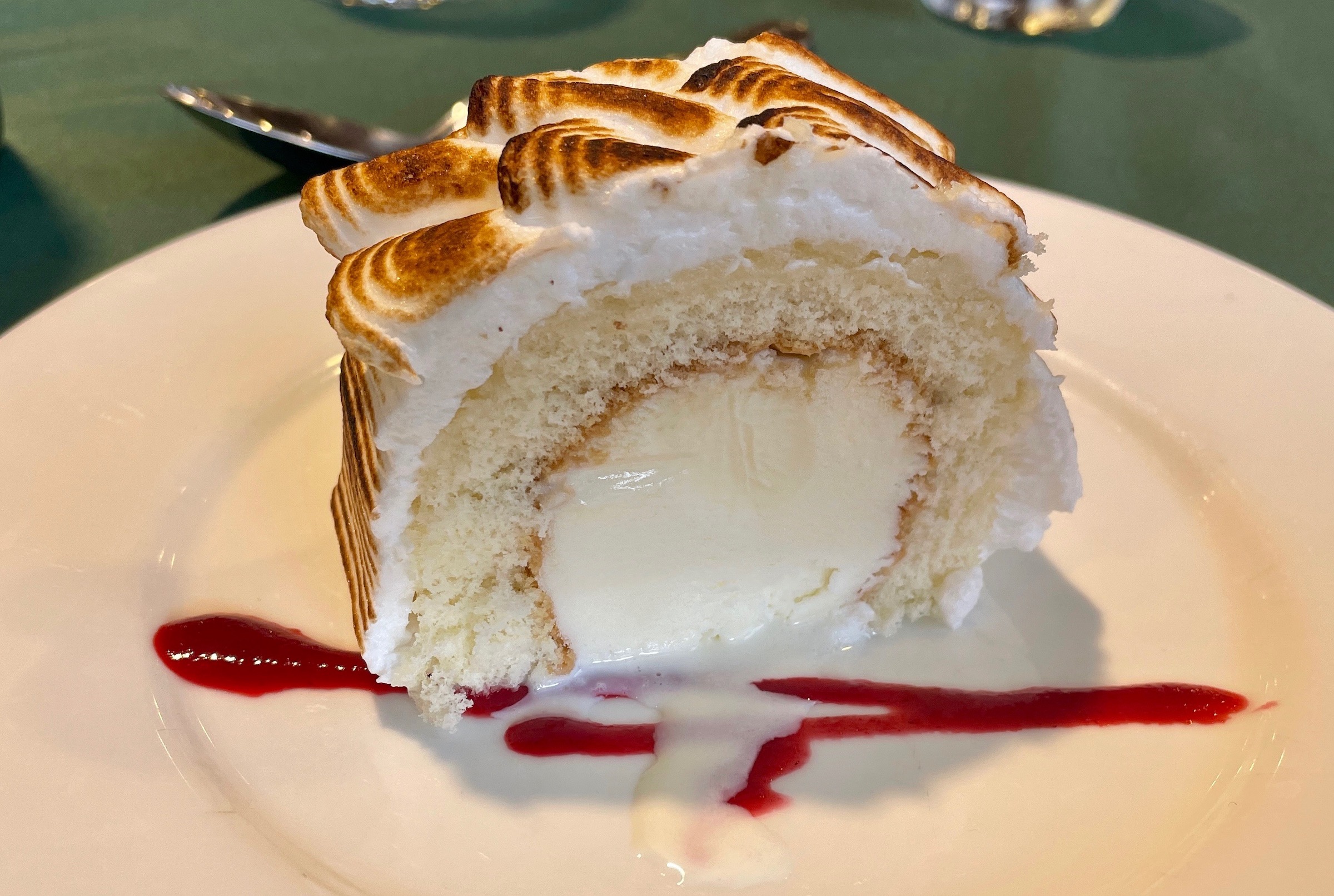
And it’s not just the food that’s great in French Polynesia. Being a French territory it is no surprise that French wines are widely available and actually about the same price as they are in Canada. Wine of good quality was included with both lunch and dinner on all meals aboard the Aranui 5. The most popular brand of beer everywhere on the islands is Hinano Lager and rightfully so. It is the perfect warm weather quaff, light and refreshing. You will probably drink a lot of it, especially if you can find it on tap. I know I did.
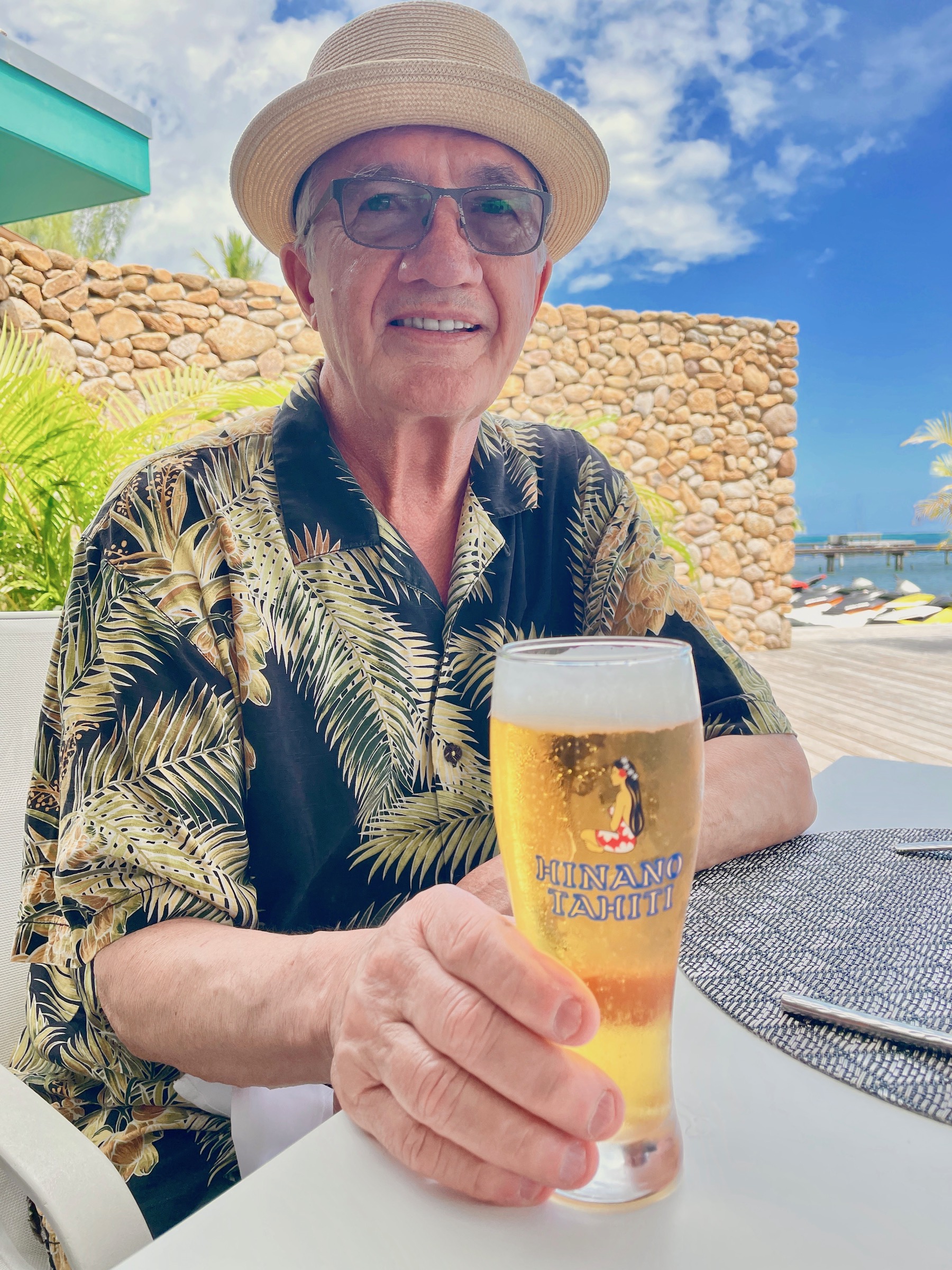
And here’s one final reason you might want to consider in choosing French Polynesia as your holiday destination in Oceania and one I did not appreciate until coming here.
Up until this trip I always wondered how it was that France managed to hold on to so many of its former colonies while Great Britain, the Netherlands, Spain, and Portugal had to give independence to all but a few of theirs. If a place as tiny as Nuie can be its own country then surely places like Martinique, Guadeloupe, French Guiana, New Caledonia and French Polynesia could do the same. Why don’t they? For one simple reason – France subsidizes their economies to the extent of providing them with a very high standard of living compared to their independent neighbours. Independence comes at a cost which the people of New Caledonia realized as they rejected independence in a recent referendum.
Thus, thanks to French tax dollars, French Polynesia despite enormous distances and tiny populations, has a standard of living equivalent to most first world countries. There is potable drinking water, modern sewage facilities, good highways and schools and excellent medical care. If you have a condition that can’t be treated at the modern hospital in Papeete, you get flown to France for it. So there’s quid pro quo taking place that benefits both the Polynesians and the French who get to vacation in one of earth’s most beautiful locations.
There are some downsides to this modern way of live – Papeete is famous as the traffic jam capital of Oceania, but for the tourist it is comforting to know that you don’t need to worry about getting sick from the food or water. Or if you do get sick for any reason there is adequate medical care. Sadly, most of the newly independent island nations of Oceania who do not have anyone subsidizing them, have second or often third world living standards. That is one of the reasons they have had to sell their fishing rights to the Chinese.
Ok, if I haven’t convinced you to come to French Polynesia by now, maybe you should stick to the Polynesian Village at Disney World.
Assuming I have convinced you, why choose Adventures Abroad to show you French Polynesia?
The Adventures Abroad Approach
The vast majority of tourists who come to French Polynesia go to one of the three main Society Islands, Tahiti where all international flights land, its nearby neighbour Moorea or the exotically named Bora Bora which is a 50 minute flight from Tahiti. Once on the island of choice they usually stay in one location, often at an overwater cottage and spend a week or more swimming, snorkelling, maybe doing an island tour and then flying home, satisfied that they have ‘done’ French Polynesia.
That’s not the Adventures Abroad approach. The trip we just took did take us to the three islands above, but also to the Tuomotu Archipelago and the Marquesas Islands. This was no mean feat as the Marquesas are 1,400 kms. (870 miles) from Tahiti. There is only one practical way to get there and and move from island to island and that is by boat. There are two possible choices to do this. The first is on the cruise ship Paul Gauguin which does go to the Marquesas a few times a year. It is a full blown cruise ship, albeit a small one, as shown in this photo I took of it from the Moorea ferry. You will pay more for one of those cabins with a balcony than we did for the entire Adventures Abroad trip which included stays at three different resorts as well as the 11 day cruise.
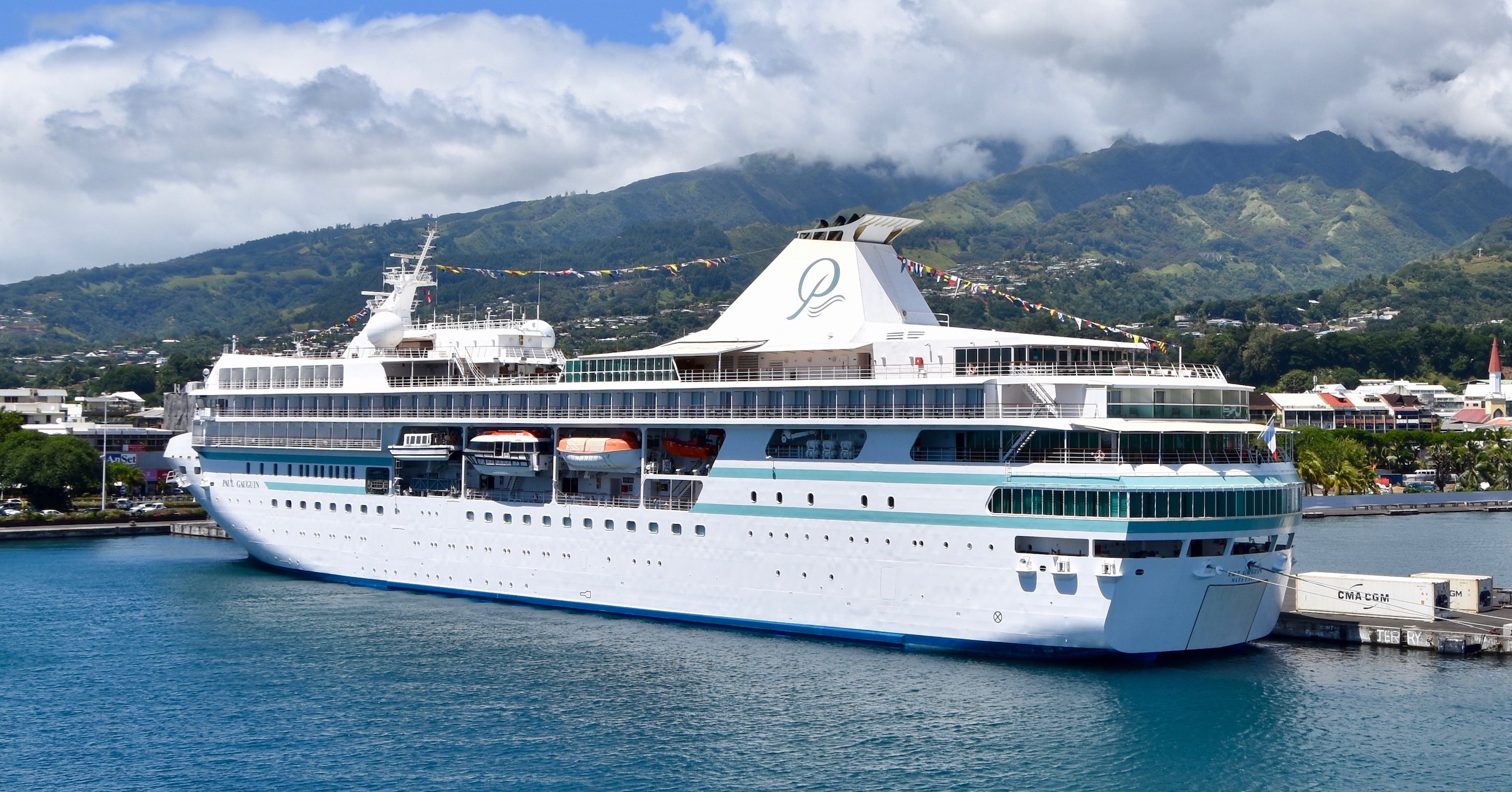
The other alternative is the passenger/freighter Aranui 5 which is a working vessel that also accommodates up to 200 passengers. It goes to places like Kauehi in the Tuomotu Archipelago that bigger ships cannot get into.
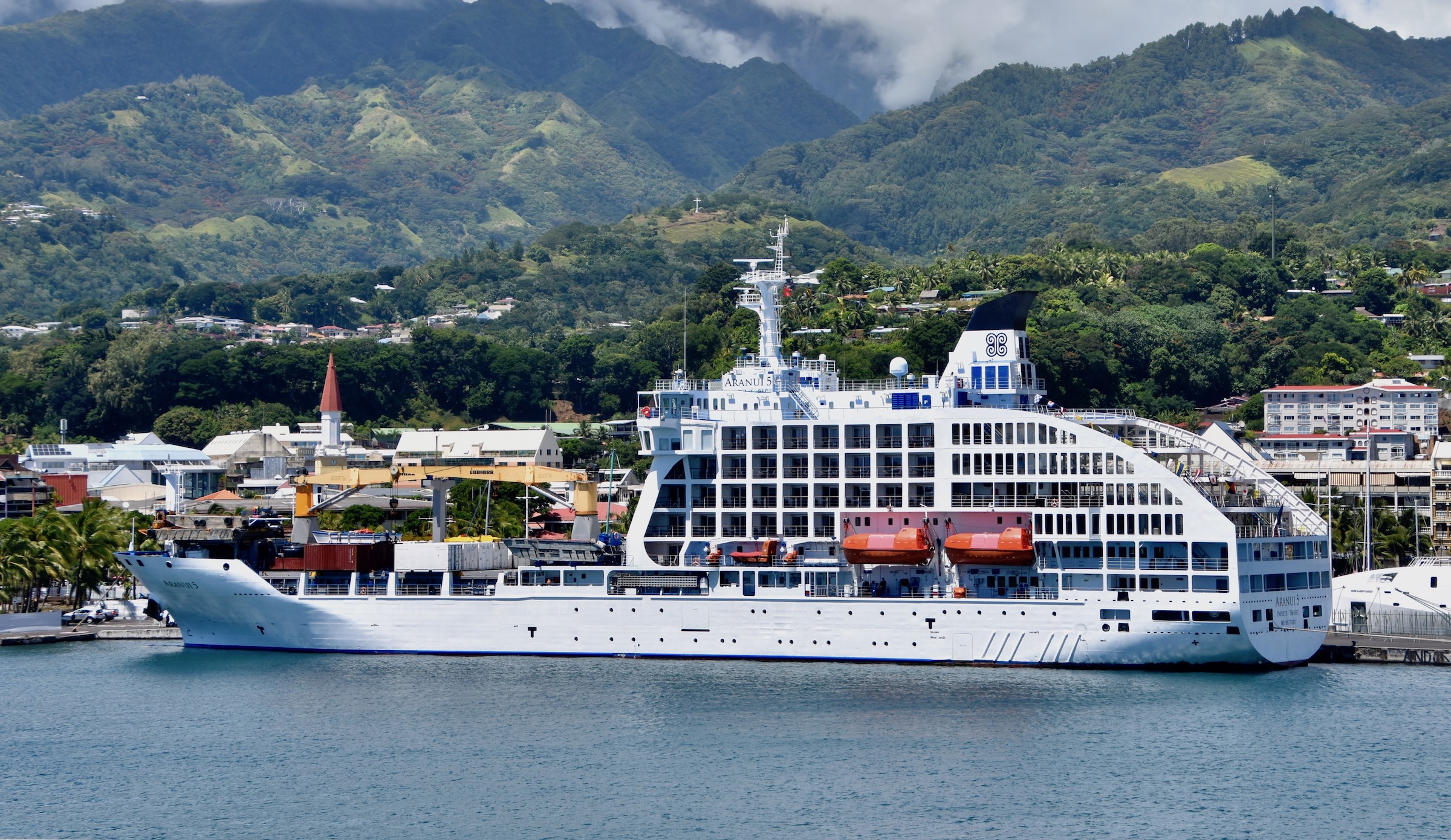
Sailing on the Aranui 5 concedes nothing in terms of the cruise experience, in fact, the cabins, the food and the overall ambience far exceeded Alison’s experience on one of the well known super cruise ships which shall go unnamed. It is also a learning experience to see how these remote islands are supplied by the Aranui 5 and in turn to see the local products such as copra that are brought on board at each stop. I am not a cruise ship devotee and frankly was a bit leery of even one this small. However, after being a passenger on this ship, I can without hesitation say that it was not only an eye opener with regards to life on the Marquesas and Tuomotu Islands, but an overall great experience. Here is a link to my post on what life is like aboard the Aranui 5.
So here’s what made Adventures Abroad unique. As far as I am aware they were the only English speaking tour company that had been able to secure space for its guests on this boat. The great majority of passengers were French with a minority of about 35 English speakers and 25 German speakers. Our group comprised about half the English speakers on board and we were the first organized English tour group to sail aboard the Aranui 5 since Covid began.
The Adventures Abroad itinerary included not only the cruise, but stays at three excellent resorts – the Te Moana in Tahiti, the Manava Beach Resort in Moorea and the Maitai in Bora Bora. They really nailed it with this last resort. Bora Bora is known for its overwater cottages from where you can simply climb down a ladder and swim or snorkel in crystal clear water with fish of every colour of the rainbow. However. most of these come with a catch – they are super expensive. For example, according to a search I just did overwater bungalows at the Four Seasons start at just under $4,000 USD a night. The Intercontinental which is just down the road from the Maitai starts at over $1,000 USD which is still out of reach for most people.
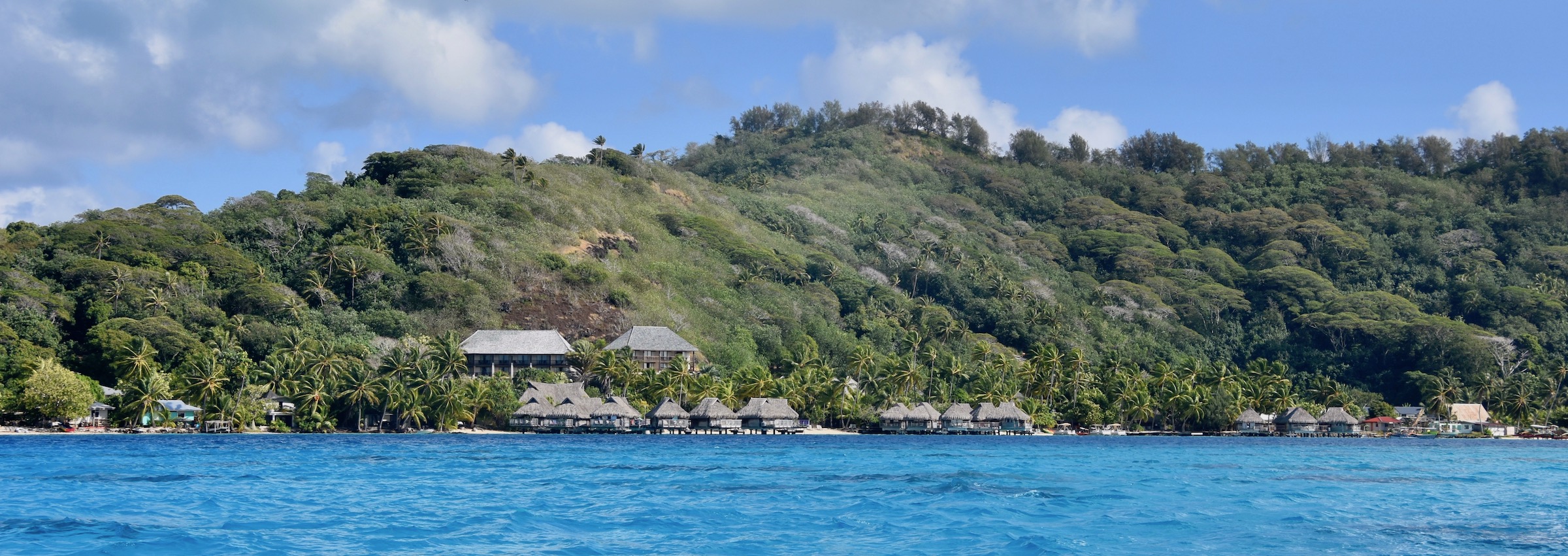
The Maitai is locally owned and operated and isn’t using a high end brand name for cachet and to justify stratospheric prices. Our payment to Adventures Abroad included a waterfront cottage which was quite nice, but for just once in our lives Alison and I really wanted to stay in one of their overwater cottages. I asked what it would cost to upgrade, expecting an eye watering amount that I would begrudgingly pay. After all how many times will I get to Bora Bora? Instead I was quoted an extra $115.00 USD a night. I couldn’t agree quick enough.
We spent two days in this cottage aptly named Paradiso.
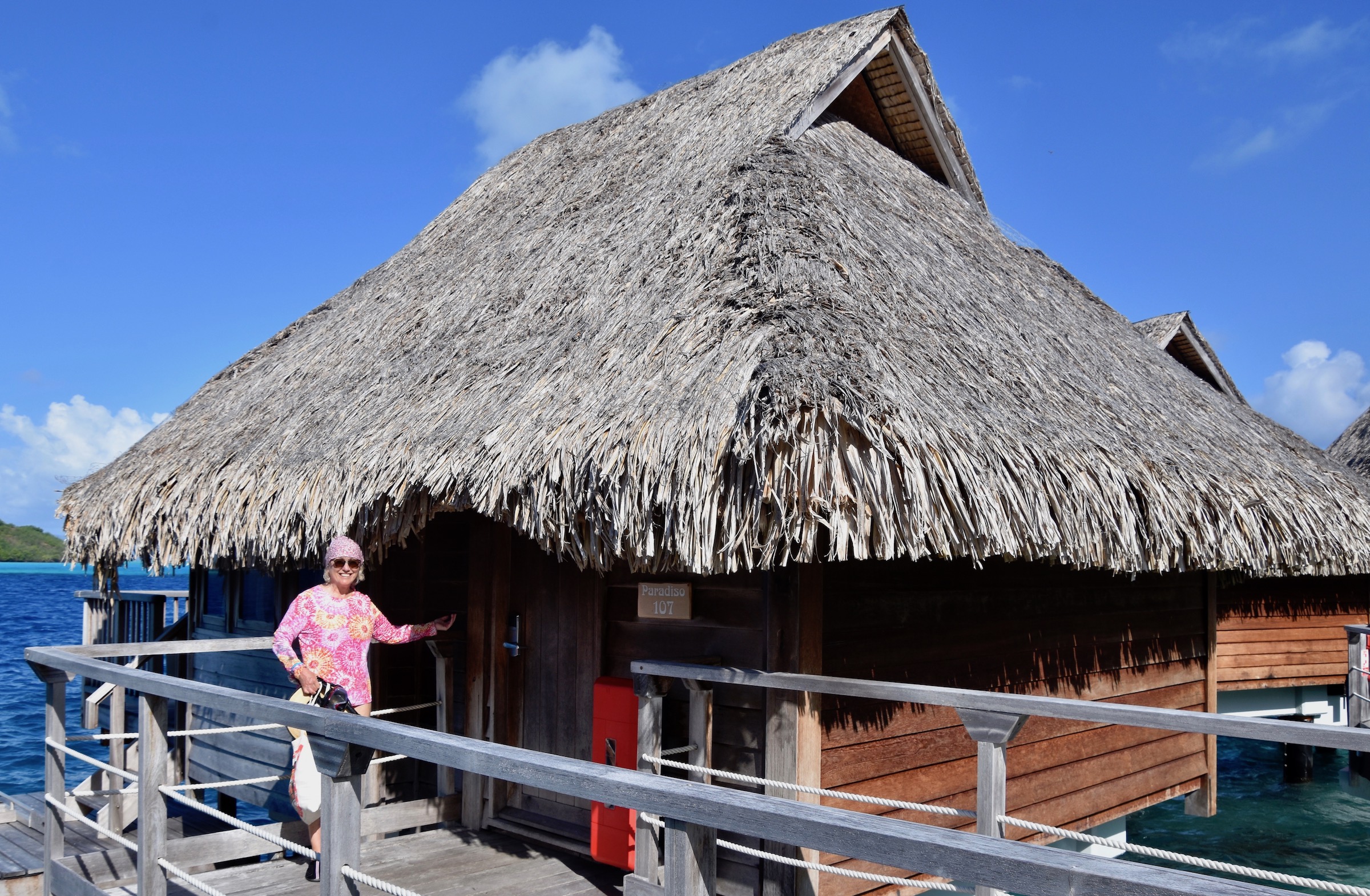
We snorkelled right off the cottage’s deck and saw more fish than anytime on the trip except perhaps at the coral garden we had visited earlier by boat – more on that in a later post. This was one my neighbours in Cottage Paradiso.
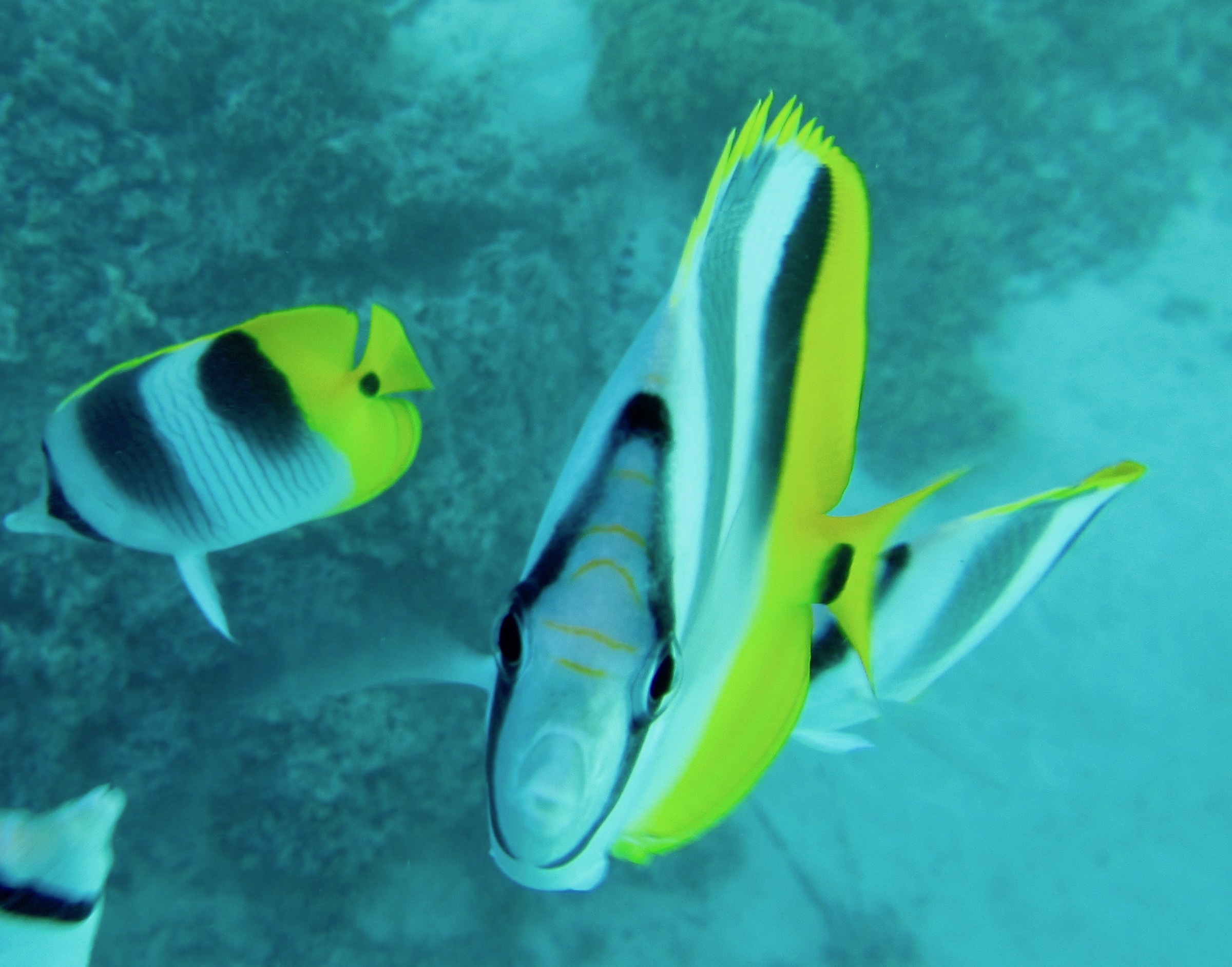
Most of the Bora Bora resorts are situated on private islands around but not on Bora Bora with the result that you are a virtual prisoner there and must pay enormous prices for meals and drinks that are not included. In the case of the Maitai we were within easy walking distance of three really good restaurants, two small markets and Matira Beach, considered to be the best in all of French Polynesia by many. We could also rent a car, bike or scooter to travel around Bora Bora on our own or go into the interesting main town of Vaitape. I can honestly say that the last two days of this trip were among the most relaxing I can ever recall and if I had known just how great the overwater cottage experience is at the Maitai, I would have booked at least two more days.
There are other reasons why the Adventures Abroad French Polynesia trip was a one of a kind such as the two boat trips on Moorea and Bora Bora or the hike to Paul Gauguin’s grave in Hiva Oa in the Marquesas, but I hope I have written enough to convince you to make your dream of a South Seas vacation in French Polynesia a reality.
While this trip does not currently appear on the AA website, I am assured by Martin that it will be back so keep your eyes open for the next French Polynesia expedition.
In the next post I’ll describe in detail why the Te Moana Resort was the perfect place to begin a French Polynesian vacation.

